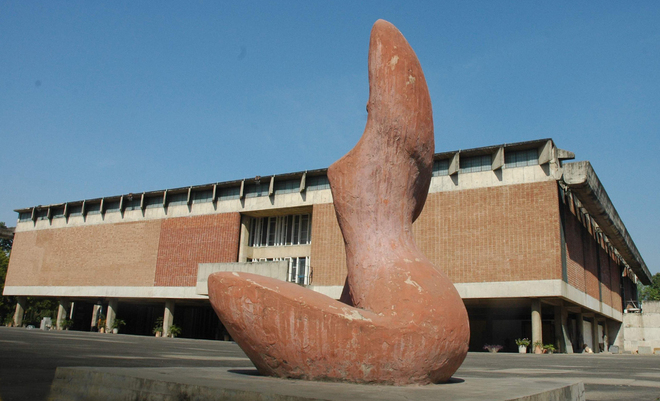Get smarter, get wiser
Amarjot Kaur
Torn between fundamental neo-liberalism of the so-called ‘smart cities’ and radical functional aesthetics of its architecture, which defines the character and heritage of Chandigarh, the city awaits concrete and progressive change. With the four-day long International Symposium Celebrating Le Corbusier’s Chandigarh—50 years after the master, coming to a pass, it hit a few nails right on the head, initiating a debate over the city’s existing infrastructure and its changing needs. Now, before you ponder over solutions, spare some mind space to answer a few questions, keeping in view the holistic sustainable development. For one, can urban development even take place while absolving rural development from it? And two, the question posed at the Symposium by Rahul Mehrotra, who teaches at the Graduate School of Design at Harvard University, “Are smart cities the elite phase of modernism?” Well, maybe the idea of a smart city is a little too abstract in a developing country like India and its diverse demographics. As the Master plan 2031, stands notified by the UT Administration and the actual implementation of it is still underway, here are a few concerns over it and of course, the smart city tag too. So, what do you choose—a dumb city, a smart city or a wise city?
Efficiency wise
The tag - Smart is nothing to be wary of! A lot of misconceptions were cleared by Jagan Shah, Director, National Institute of Urban Affairs. Under this target, each city has to strive to achieve certain fundamental goals while retaining and building upon its unique identity. There is no one formula meant to fit all! About the master plan 2031, I believe that the new vision for Chandigarh has to be more clearly defined, taking in the growth and development issues as challenges and not problems. The need of the day is to build on the robust armature Corbusier has given to our city and find solutions to the challenges today. The original vision of the city was to be a model city for the entire nation. There is a need to carefully define a set of rules to accommodate integral reality of urban India. The open spaces of Chandigarh need to be given a social interactive infrastructure and revitalised as avenues for informal interactions. Also, the administration must adopt a proactive rather than a reluctant approach to meet the challenges of growth around the city. There is scope to explore a best-suited model for housing for our people e.g. low-rise high density housing. I believe that Capitol should be made more people.
Shilpa Das, architect, Evolve Architecture
Points to be noted
Every city needs to address the basic needs of food, shelter, work, transport, infrastructure for the masses. A city that does that with maximum efficiency in resource consumption is a smart city. The idea is to use scare resources to benefit the maximum number of people. The current urban development pathway is focussed on disconnected high rises, excessive glass buildings with double glazed windows and huge tonnage for AC in its quest to modernise. But the development should be more integrated.
As said by Rahul Mehrotra, we should focus on the idea of “smart villages” and maybe even integrate them in our urban setup as a plug-in! Though the city lacks in economic sustainability and inclusiveness, we could focus on smart and sustainable living and be aware about our resource consumption, in addition to making it a high-tech smart city.
Priya Gupta, assistant professor, Chandigarh College of Architecture
Tech check
I feel that the city needs technical advancement and smart solutions, but I am not too sure about the metros because people in the city don’t even use public transport. Driving a personal car has become a status symbol. I mean look at the geri routes? It’s becoming a part of our culture. However, I am glad that the Master Plan 2031 is considering a more bicycle and pedestrian friendly transportation.
Varsha Nandwani, assistant professor, Chandigarh College of Architecture
Hail the heritage
Chandigarh need not be a smart city, but a wise city where, basic needs and comfortable life persists but Corbusier’s heritage is preserved and kept intact. Use technology as a layer over a good design, not as the core. The only amendment I can think of for the Master Plan 2031 is a better and an efficient public transport system, be it metro or buses. Lastly, the use of the beautiful open and green spaces should be encouraged by the administration with lesser rules. More recreation avenues should be made where concerts, dances and theatres etc attract the youth at the piazza of the Capitol Complex, Sector 17 and Leisure Valley areas.
Shivansh Sharma, student, Chitkara School of Architecture and Planning









